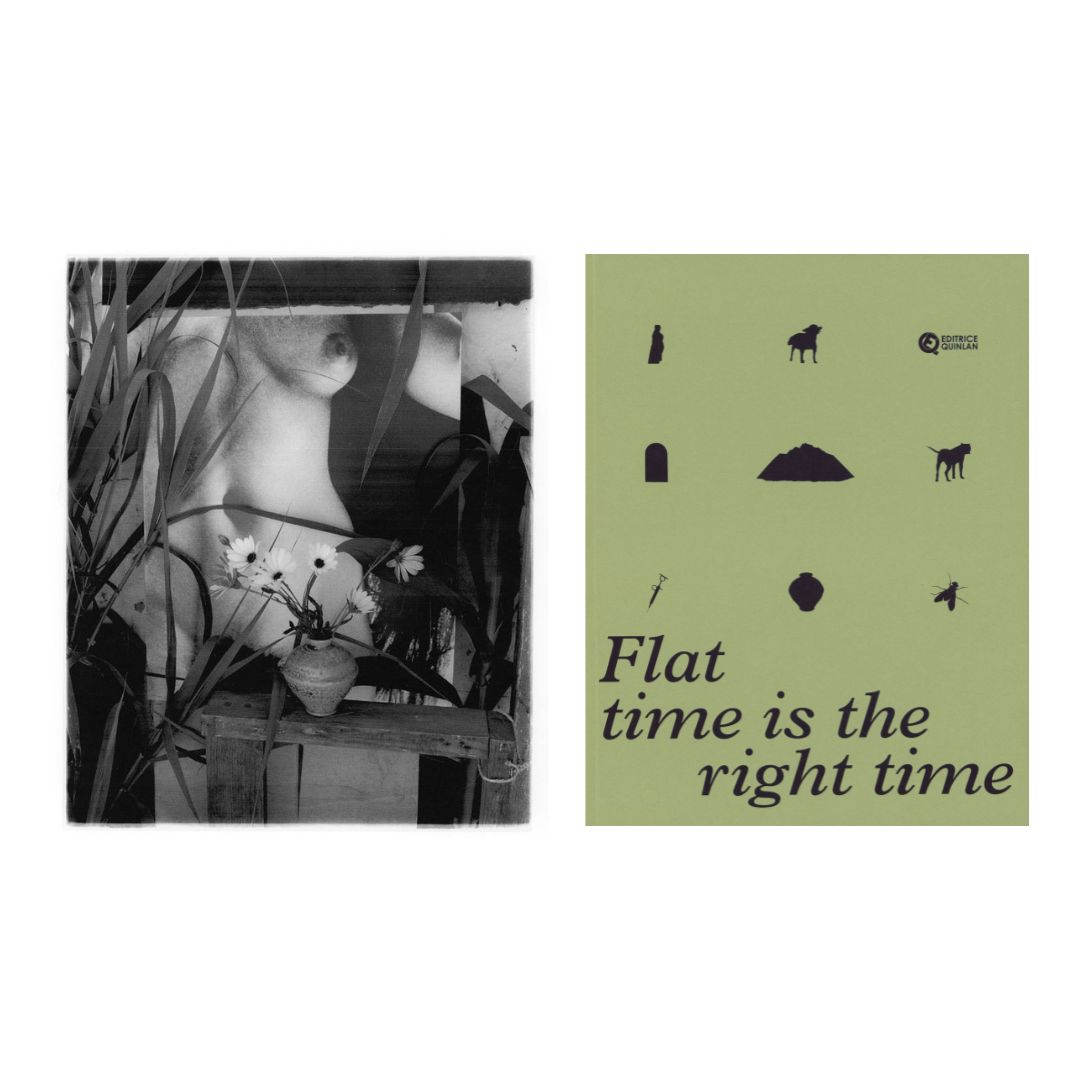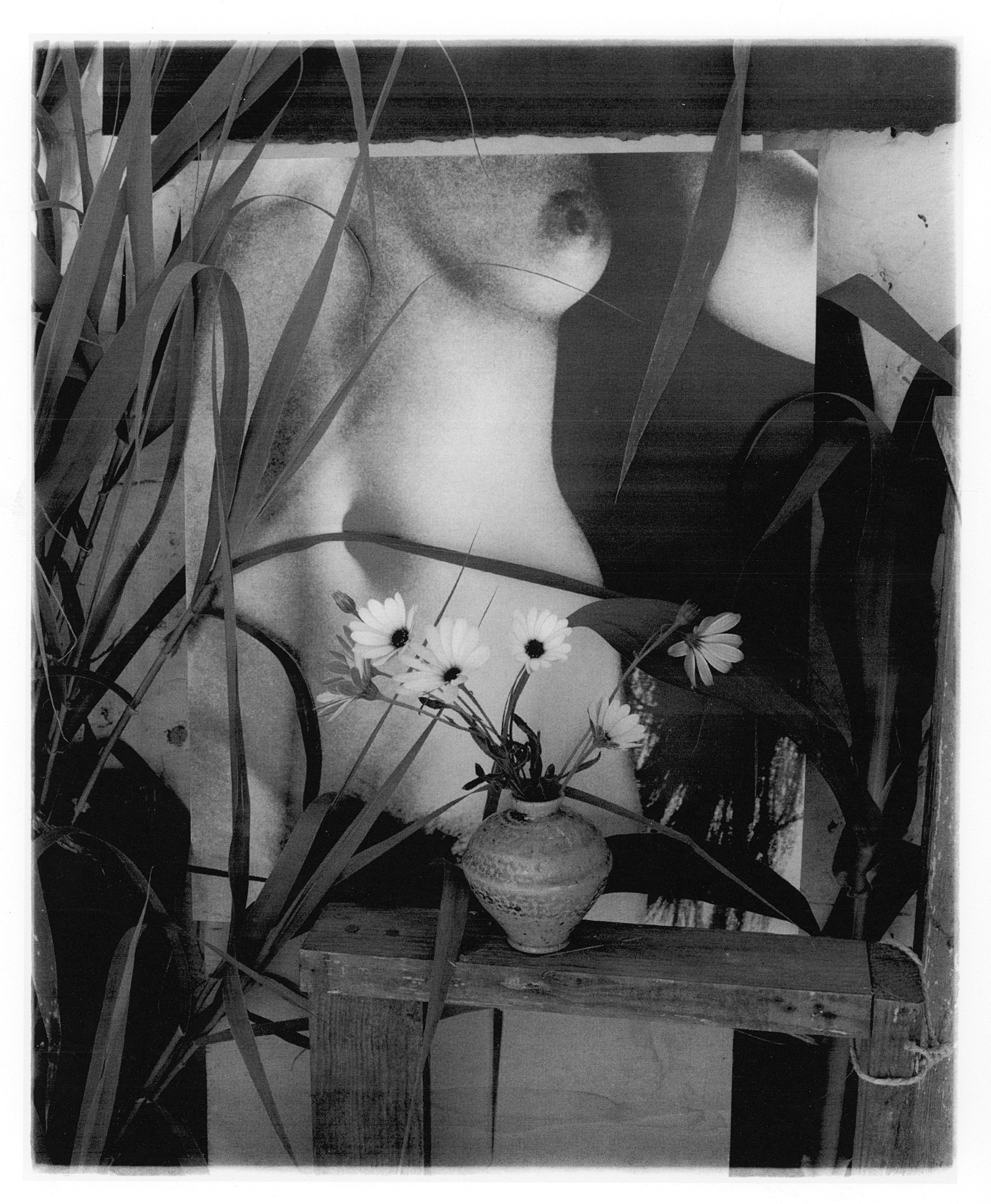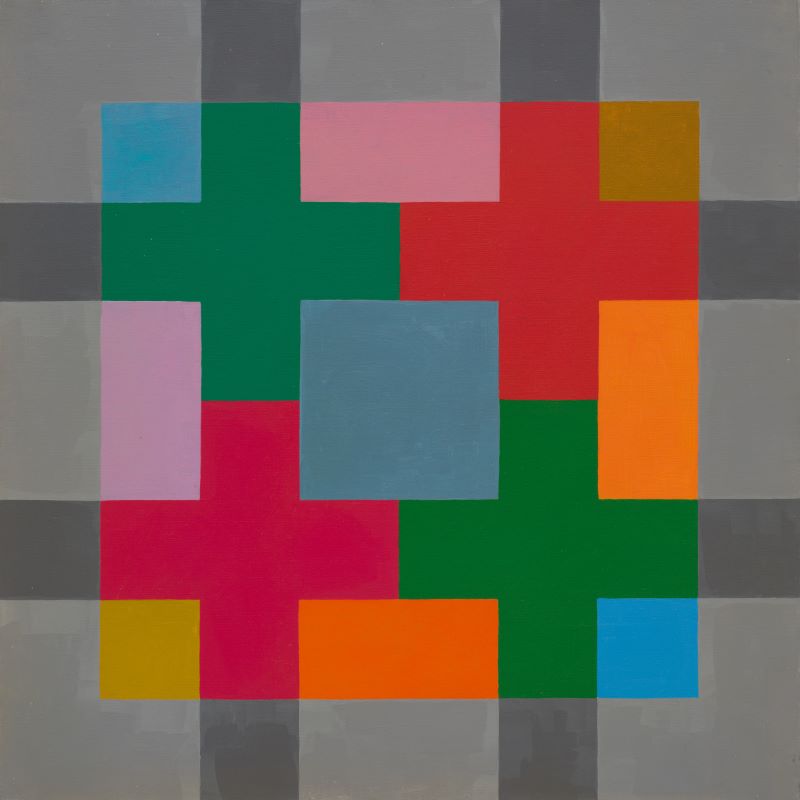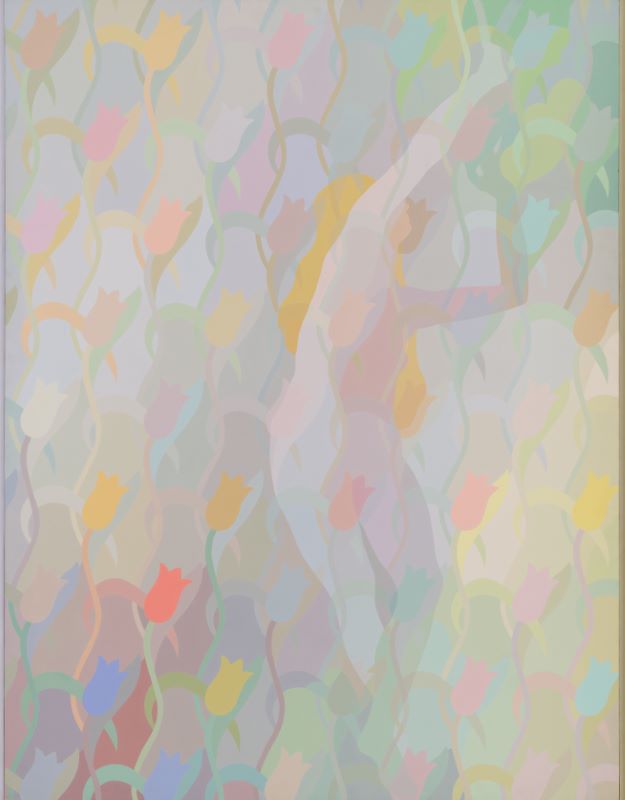WFF Housing Stability Grant Awarded
The first round of funds have officially been sent to recipients of the inaugural WFF Housing Stability Grant for Artists (WFF HSG)!
L to R: 1: “Still Life, Little Vase, Vivienne,” 2003, 23 3/4 x 19 3/4 in. | 2: “Dialogue of the Dresses” or “Antella Still Life,” 1999, 16 x 20 in. | 3: “Still Life with Picture of Eleanora,” 2009, 23 3/4 x 20 in. | 4: “Still Life with Rachel” or “Childhood Memories,” 1997, 20 x 16 in. | 5: “Vatican Mysteries,” 1996, 42 x 33 in. | 6: “Kitty and Rabbit on the Classical Past” or “Rococo Still Life,” 1993, 20 x 16 in. | 7: “Italian Still Life,” 2000, 24 x 30 in. | 8: “Saskia Disrobing in Still Life” or “Saskia and Fruit,” 2003, 20 x 24 in. All gelatin silver prints. All artworks by George Woodman © Woodman Family Foundation / Artists Rights Society (ARS), New York
George Woodman. “Still Life, Little Vase, Vivienne,” 2003, 23 3/4 x 19 3/4 in. Gelatin silver print © Woodman Family Foundation / SIAE, Rome & Cover of "Flat time is the right time"
George Woodman's still life photography in "Flat time is the right time: Bodies, Places and Still Life from Pier Luigi Gibelli’s Collection," 2025
George Woodman’s still life photography bears unmistakable traces of his decades-long career as a painter: His compositions—re-photographed prints and negatives, fruits and drapery, sculptures and paintings collapsed into a single pictorial space—are at once witty and rich in art historical allusion.
Installation view, "George Woodman: A Democracy of Parts, Paintings 1966-1978," DC Moore Gallery, New York, 2025
Exhibition Video for "George Woodman: A Democracy of Parts, Paintings 1966-1978," DC Moore Gallery, New York, 2025
Watch the exhibition video to listen to Rebecca Lowery, Curator of Exhibitions at the Wexner Center for the Arts at The Ohio State University, discusses George Woodman's evolving use of tessellations and color.
1: “Magic Mountain,” c. 1970, 66 x 54 in. Oil on canvas | 2: “Untitled,” 1969, 48 1/4 x 48 1/4 in. Acrylic on canvas | 3: “Cascade,” 1974, 36 x 36 in. Acrylic on canvas | 4: “Untitled,” 1974, 66 x 66 in. Acrylic and oil on canvas | 5: “Cloud,” 1969, 68 3/4 x 58 1/2 in. Oil on canvas | 6: “Untitled,” 1970, 54 1/4 x 54 1/4 in. Acrylic on canvas | 7: “Untitled,” c. 1974-76, 59 x 59 in. Acrylic on canvas | 8: “Color Octagon,” 1975, 83 x 83 in. Acrylic on canvas | 9: “Winterreise,” 1975, 85 x 85 in. Acrylic on canvas. All artworks by George Woodman © Woodman Family Foundation / Artists Rights Society (ARS), New York.
George Woodman. “Magic Mountain,” c. 1970, 66 x 54 in. Oil on canvas © Woodman Family Foundation / Artists Rights Society (ARS), New York
Idiosyncratic use of color. "George Woodman: A Democracy of Parts, Paintings 1966-1978," DC Moore Gallery, New York, 2025
Pattern paintings made up of repeating forms can tend towards uniformity or sameness, but not so for George Woodman. Instead, he integrated color into his pattern systems as an equal to form rather than a subordinate, constructing compositions in which color steers and complicates the viewer’s perception.
L to R: 1: George Woodman, “Piazza San Francesco di Paola,” 1966, 32 x 32 in. Oil on canvas | 2: George Woodman, “Untitled,” 1964, 49 x 49 in. Oil on canvas | 3: George Woodman, “Untitled,” c. 1965, 57 x 68 in. Acrylic on canvas | 4: George Woodman, “Untitled,” 1967, 65 x 65 in. Oil on canvas | 5: George Woodman, “Rainbow Funnel,” c. 1967-69, 63 x 39 1/2 in. Acrylic on canvas | 6: George Woodman, Notes from a lecture on Sol LeWitt, c. 1976. Woodman Family Foundation Archives. | 7: George Woodman, Notes from a lecture on Pattern and Art, c. 1979. Woodman Family Foundation Archives. | 8: Sol LeWitt, “Wall Drawing 1: Drawing Series II 18 (A & B),” 1968, each 48 x 48 in. Graphite on wall. San Francisco Museum of Modern Art © The LeWitt Estate | 9: Sol LeWitt, “Cubic-Modular Wall Structure, Black,” 1966, 43 1/2 x 43 1/2 x 9 3/8 in. Painted wood. Museum of Modern Art © The LeWitt Estate | 10: Sol LeWitt, “Serial Project, I (ABCD),” 1966, 20 in. x 13 ft. 7 in. x 13 ft. 7 in. Baked enamel on steel units over baked enamel on aluminum. Museum of Modern Art © The LeWitt Estate | 11: Frank Stella, “Harran II,” 1967, 10 x 20 ft. Polymer on fluorescent polymer paint on canvas. Solomon R. Guggenheim Museum © Estate of Frank Stella | 12: Frank Stella, “Gray Scramble,” 1968-69, 69 x 69 in. Oil on canvas. Solomon R. Guggenheim Museum © Estate of Frank Stella | 13: Alfred Jensen, In-text plate (folio 13) from “A Pythagorean Notebook,” 1965, 15 9/16 × 20 11/16 in. Composition from illustrated book with 20 lithographs, published by Tamarind Lithography Workshop. Museum of Modern Art © Estate of Alfred Jensen | 14: Alfred Jensen, “That Is It,” 1966, 42 x 36 in. Oil on canvas. Museum of Modern Art © Estate of Alfred Jensen | 15: Alfred Jensen, “The Acrobatic Rectangle Per, Eleven,” 1967, 68 x 48 1/2 in. Oil on canvas. Whitney Museum of American Art © Estate of Alfred Jensen | 16: Agnes Martin, “Orchards of Lightning,” 1966, 11 3/4 x 9 3/8 in. Ink on paper. Museum of Modern Art © Estate of Agnes Martin | 17: Agnes Martin, “Untitled,” 1963, 8 x 8 in. Brush and ink and pen and ink on paper. Whitney Museum of American Art © Estate of Agnes Martin | 18: Agnes Martin, “Untitled,” 1960, 70 x 70 in. Oil on canvas. Dia Art Foundation © Estate of Agnes Martin. All George Woodman artworks © Woodman Family Foundation. All artworks © Artists Rights Society (ARS), New York
George Woodman, “Piazza San Francesco di Paola,” 1966, 32 x 32 in. Oil on canvas © Woodman Family Foundation / Artists Rights Society (ARS), New York
George Woodman in dialogue with New York minimalist painters. “George Woodman: A Democracy of Parts, Paintings 1966-1978,” DC Moore Gallery, New York, 2025
In her essay for the exhibition’s catalogue—“The Mind as it Measures: George Woodman’s Patterns”—curator Rebecca Skafsgaard Lowery discusses Woodman’s approach to pattern and color in the context of his contemporaries.
L to R: 1: “Untitled,” c. 1970-71, 66 3/8 x 66 3/8 in. | 2: “Untitled,” c. 1971, 52 x 52 in. | 3: “7 Colors in 4’s,” 1966, 67 x 67 in. | 4: “Untitled,” 1968, 63 x 98 1/4 in. | 5: “Untitled,” 1975, 60 x 60 in. | 6: “Untitled,” 1978, 49 x 49 in. All acrylic on canvas. All artworks by George Woodman © Woodman Family Foundation / Artists Rights Society (ARS), New York
George Woodman. “Untitled,” c. 1970-71, 66 3/8 x 66 3/8 in. Acrylic on canvas © Woodman Family Foundation / Artists Rights Society (ARS), New York
ON VIEW: "George Woodman: A Democracy of Parts, Paintings 1966-1978," DC Moore Gallery, New York, 2025
Focusing on geometric abstractions from a significant period within the artist's six-decade career, this exhibition traces the development of George Woodman's singular approach to pattern.
Photos, L to R: Betty Woodman in her New York studio, c. 1983 | Francesca Woodman, c. 1979-80. Photo: George Woodman | George Woodman in front of his paper tile installation, 1979 Woodman Family Foundation Archives. Artwork and photo by George Woodman © Woodman Family Foundation / Artists Rights Society (ARS), New York
Graphic with text: "WFF Housing Stability Grant for Artists / 3-year rent subsidies for 5 visual artists in NYC"
Announcing the WFF Housing Stability Grant for NYC-based visual artists
In recognition of the increasing unaffordability of rental housing in New York City and the housing insecurity it creates for artists, WFF will award grants of $30,000—distributed over three years—to five visual artists with the goal of improving their housing stability.
L to R: Group, T to B: Betty Woodman, “Athens,” 1991, 35 1/2 x 68 5/8 x 10 1/4 in. Glazed earthenware, epoxy resin, lacquer, and paint / George Woodman, “Untitled,” c. 1966-68, 39 1/2 x 39 1/2 in. Acrylic on canvas / Francesca Woodman, “After My Grandmother's Funeral,” 1977, from the “After My Grandmother's Funeral” series, 5 1/8 x 5 1/4 in. Gelatin silver print | Betty Woodman, “Athens,” 1991, 35 1/2 x 68 5/8 x 10 1/4 in. Glazed earthenware, epoxy resin, lacquer, and paint | George Woodman, “Untitled,” c. 1966-68, 39 1/2 x 39 1/2 in. Acrylic on canvas | Francesca Woodman, “After My Grandmother's Funeral” series, 1977. Gelatin silver prints | Francesca Woodman, “After My Grandmother's Funeral,” 1977, from the “After My Grandmother's Funeral” series, 5 1/8 x 5 1/4 in. Gelatin silver print | Francesca Woodman, “After My Grandmother's Funeral,” 1977, from the “After My Grandmother's Funeral” series, 5 1/8 x 5 1/8 in. Gelatin silver print | Francesca Woodman, “Untitled,” 1977, from the “After My Grandmother's Funeral” series, 5 5/16 x 5 1/4 in. Gelatin silver print | Francesca Woodman, “After My Grandmother's Funeral,” 1977, from the “After My Grandmother's Funeral” series, 5 x 5 1/8 in. Gelatin silver print | Francesca Woodman, “After My Grandmother's Funeral,” 1977, from the “After My Grandmother's Funeral” series, 5 1/8 x 5 1/8 in. Gelatin silver print | Francesca Woodman, “2,” 1977, from the “After My Grandmother's Funeral” series, 5 1/4 x 5 1/4 in. Gelatin silver print All artworks © Woodman Family Foundation / Artists Rights Society (ARS), New York.
Group, T to B: Betty Woodman, “Athens,” 1991 / George Woodman, “Untitled,” c. 1966-68 / Francesca Woodman, “After My Grandmother's Funeral,” 1977, from the “After My Grandmother's Funeral” series © Woodman Family Foundation / Artists Rights Society (ARS), New York.
Acquisition by the Currier Museum of Art, Manchester, New Hampshire, 2024
We are very pleased to announce the acquisition of a group of important works by Betty Woodman, Francesca Woodman, and George Woodman from the Foundation’s holdings by the Currier Museum of Art in Manchester, New Hampshire.
L to R: George Woodman. "Daphne," 1982, 78 x 60 in. Acrylic on canvas. Image courtesy DC Moore Gallery. Artwork © Woodman Family Foundation / Artists Rights Society (ARS), New York / Installation view, "Who Is There?", DC Moore Gallery, New York, 2024
George Woodman. "Daphne," 1982, 78 x 60 in. Acrylic on canvas. Image courtesy DC Moore Gallery. Artwork © Woodman Family Foundation / Artists Rights Society (ARS), New York.
ON VIEW: George Woodman in "Who Is There?", DC Moore Gallery, New York, 2024
This group exhibition of personal, expressive landscapes features works that merge abstraction and representation, depicting threshold spaces and hybridized forms where the observed and the imaginative meet.
Still from exhibition video for “Betty Woodman and George Woodman,” Charleston, East Sussex, UK, March 25–September 10, 2023. Exhibition video Charleston Trust. All video interviews Woodman Family Foundation Archives.
Exhibition video for "Betty Woodman and George Woodman," Charleston, East Sussex, England, 2023
Catch a glimpse of Betty and George Woodman's Italian studios and home and hear them speak about the importance of Italy to their work in this exhibition video, assembled from interviews in the Woodman Family Foundation archives.
Installation view: “Betty Woodman and George Woodman," Charleston, East Sussex, England, 2023.
Video vignettes from Charleston for “Betty Woodman and George Woodman,” Charleston, East Sussex, England, 2023
Video vignettes by Charleston that highlight artworks by Betty Woodman and George Woodman included in the exhibition Betty Woodman and George Woodman. On view through September 10, 2023.
L to R: Betty Woodman. "Balustrade Relief Vase 00-5," 2000. 81 x 67 x 8 in. Glazed earthenware, epoxy resin, lacquer, and paint / Detail: George Woodman. "Low Balustrade Screen" or "Garden Balustrade Screen," 1981 / George Woodman. "Low Balustrade Screen" or "Garden Balustrade Screen," 1981 42 x 151 ½ in. Each panel 42 x 30 in. Acrylic on canvas.
Betty Woodman. "Balustrade Relief Vase 00-5," 2000 / Detail: George Woodman. "Low Balustrade Screen" or "Garden Balustrade Screen"," 1981 © Woodman Family Foundation / DACS, London
PREVIEW: "Betty Woodman and George Woodman" in "Financial Times," February 2023
Read Ajesh Patalay's preview of "Betty Woodman and George Woodman" on view now through September 10, 2023 at Charleston, East Sussex, UK.



















